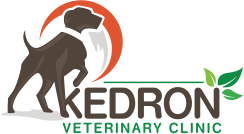Understanding Hip Dysplasia in Dogs: Navigating Your Pet’s Health Journey
Hip dysplasia is a serious and often debilitating condition that affects certain larger dog breeds, including Labrador Retrievers, German Shepherds, Rottweilers, St. Bernards, and Golden Retrievers, among others. Recognizing the signs and initiating a treatment plan early on is crucial for your pet’s well-being. Learn more about this condition and how we can help at Kedron Veterinary Clinic.
Symptoms of Hip Dysplasia in Dogs: Recognizing the Signs
Hip dysplasia typically develops in young dogs as they grow, with signs potentially appearing as early as six weeks old or not until they reach two years of age. Each dog is unique, so it’s essential to monitor your pet’s condition closely. Consult your veterinarian if you observe:
- Decreased activity
- Difficulty climbing stairs or jumping up
- Struggles to stand up in the morning
- Hind leg hopping
- Lameness in the hind legs
- Hip pain and sensitivity
- Audible grating during joint movements
- Unusually close positioning of the hind legs
Causes of Hip Dysplasia: Unraveling the Factors
Both genetic predisposition and environmental factors can contribute to a dog’s likelihood of developing hip dysplasia, including:
- Genetic susceptibility to hip looseness
- Rapid weight gain and untreated obesity
- Poor nutrition
- Pelvic muscle size
Early Screening: A Proactive Approach
Early detection of hip dysplasia is possible through innovative screening methods like the PennHIP technique, which can predict the likelihood of developing arthritis and hip dysplasia from as early as 16 weeks of age.
Treating Hip Dysplasia in Dogs: Compassionate Care for Your Companion
At Kedron Veterinary Clinic, we utilize radiography to accurately diagnose internal bone and soft tissue conditions. Once diagnosed, various treatment options are available, including:
- K-Laser Therapy: Utilizing laser light wavelengths to reduce inflammation, increase circulation, and alleviate pain
- Acupuncture: Improving blood flow and promoting the removal of metabolic waste, thereby reducing pain and enhancing mobility
- Medication: Anti-inflammatory and pain management medications can help alleviate symptoms and improve motion
Proactive weight management is also crucial in slowing down the progression of hip dysplasia, as reducing joint stress can help preserve joint health.
Seeking Guidance at Kedron Veterinary Clinic: Your Partner in Pet Health
If you’ve observed any symptoms of hip dysplasia in your pet, don’t hesitate to discuss treatment options with our compassionate team at Kedron Veterinary Clinic. Call us at (07) 3857 1785 or contact us online for personalized care and expert guidance.
